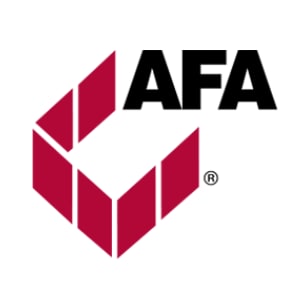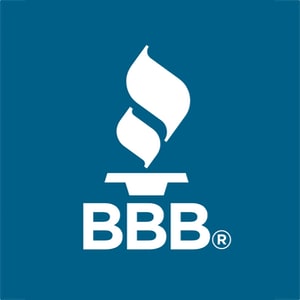Boca Codes
These swimming pool safety codes are provided as a courtesy. It is very important that you check with your local building inspector to ensure that you are following the appropriate zoning and safety regulations for your area.
2015 International Swimming Pool and Spa Code
CHAPTER 3
GENERAL COMPLIANCE
SECTION 305
BARRIER REQUIREMENTS
305.1 General.
The provisions of this section shall apply to the design of barriers for pools and spas. These design controls are intended to provide protection against the potential drowning and near drowning by restricting access to such pools or spas. These requirements provide an integrated level of protection against potential drowning through the use of physical barriers and warning devices.
Exceptions:
Spas and hot tubs with a lockable safety cover that complies with ASTM F 1346.
Swimming pools with a powered safety cover that complies with ASTM F 1346.
305.2 Outdoor swimming pools and spas.
Outdoor pools and spas and indoor swimming pools shall be surrounded by a barrier that complies with Sections 305.2.1 through 305.7.
305.2.1 Barrier height and clearances.
Barrier heights and clearances shall be in accordance with all of the following:
The top of the barrier shall be not less than 48 inches (1219 mm) above grade where measured on the side of the barrier that faces away from the pool or spa. Such height shall exist around the entire perimeter of the barrier and for a distance of 3 feet (914 mm) measured horizontally from the outside of the required barrier.
The vertical clearance between grade and the bottom of the barrier shall not exceed 2 inches (51 mm) for grade surfaces that are not solid, such as grass or gravel, where measured on the side of the barrier that faces away from the pool or spa.
The vertical clearance between a surface below the barrier to a solid surface, such as concrete, and the bottom of the required barrier shall not exceed 4 inches (102 mm) where measured on the side of the required barrier that faces away from the pool or spa.
Where the top of the pool or spa structure is above grade, the barrier shall be installed on grade or shall be mounted on top of the pool or spa structure. Where the barrier is mounted on the top of the pool or spa, the vertical clearance between the top of the pool or spa and the bottom of the barrier shall not exceed 4 inches (102 mm).
305.2.2 Openings.
Openings in the barrier shall not allow passage of a 4-inch-diameter (102 mm) sphere.
305.2.3 Solid barrier surfaces.
Solid barriers that do not have openings shall not contain indentations or protrusions that form handholds and footholds, except for normal construction tolerances and tooled masonry joints.
305.2.4 Mesh fence as a barrier.
Mesh fences, other than chain link fences in accordance with Section 305.2.7, shall be installed in accordance with the manufacturer's instructions and shall comply with the following:
The bottom of the mesh fence shall be not more than 1 inch (25 mm) above the deck or installed surface or grade.
The maximum vertical clearance from the bottom of the mesh fence and the solid surface shall not permit the fence to be lifted more than 4 inches (102 mm) from grade or decking.
The fence shall be designed and constructed so that it does not allow passage of a 4-inch (102 mm) sphere under any mesh panel. The maximum vertical clearance from the bottom of the mesh fence and the solid surface shall not be more than 4 inches (102 mm) from grade or decking.
An attachment device shall attach each barrier section at a height not lower than 45 inches (1143 mm) above grade. Common attachment devices include, but are not limited to, devices that provide the security equal to or greater than that of a hook-and-eye-type latch incorporating a spring-actuated retaining lever such as a safety gate hook.
Where a hinged gate is used with a mesh fence, the gate shall comply with Section 305.3.
Patio deck sleeves such as vertical post receptacles that are placed inside the patio surface shall be of a nonconductive material.
Mesh fences shall not be installed on top of onground residential pools.
305.2.5 Closely spaced horizontal members.
Where the barrier is composed of horizontal and vertical members and the distance between the tops of the horizontal members is less than 45 inches (1143 mm), the horizontal members shall be located on the pool or spa side of the fence. Spacing between vertical members shall not exceed 13/4 inches (44 mm) in width. Where there are decorative cutouts within vertical members, spacing within the cutouts shall not exceed 13/4 inches (44 mm) in width.
305.2.6 Widely spaced horizontal members.
Where the barrier is composed of horizontal and vertical members and the distance between the tops of the horizontal members is 45 inches (1143 mm) or more, spacing between vertical members shall not exceed 4 inches (102 mm). Where there are decorative cutouts within vertical members, the interior width of the cutouts shall not exceed 13/4 inches (44 mm).
305.2.7 Chain link dimensions.
The maximum opening formed by a chain link fence shall be not more than 13/4 inches (44 mm). Where the fence is provided with slats fastened at the top and bottom which reduce the openings, such openings shall be not more than 13/4 inches (44 mm).
305.2.8 Diagonal members.
Where the barrier is composed of diagonal members, the maximum opening formed by the diagonal members shall be not more than 13/4 inches (44 mm). The angle of diagonal members shall be not greater than 45 degrees (0.79 rad) from vertical.
305.2.9 Clear zone.
There shall be a clear zone of not less than 36 inches (914 mm) between the exterior of the barrier and any permanent structures or equipment such as pumps, filters and heaters that can be used to climb the barrier.
305.2.10 Poolside barrier setbacks.
The pool or spa side of the required barrier shall be not less than 20 inches (508 mm) from the water's edge.
305.3 Gates.
Access gates shall comply with the requirements of Sections 305.3.1 through 305.3.3 and shall be equipped to accommodate a locking device. Pedestrian access gates shall open outward away from the pool or spa, shall be self-closing and shall have a self-latching device.
305.3.1 Utility or service gates.
Gates not intended for pedestrian use, such as utility or service gates, shall remain locked when not in use.
305.3.2 Double or multiple gates.
Double gates or multiple gates shall have at least one leaf secured in place and the adjacent leaf shall be secured with a self-latching device. The gate and barrier shall not have openings larger than 1/2 inch (12.7 mm) within 18 inches (457 mm) of the latch release mechanism. The self-latching device shall comply with the requirements of Section 305.3.3.
305.3.3 Latches.
Where the release mechanism of the self-latching device is located less than 54 inches (1372 mm) from grade, the release mechanism shall be located on the pool or spa side of the gate not less than 3 inches (76 mm) below the top of the gate, and the gate and barrier shall not have openings greater than 1/2 inch (12.7 mm) within 18 inches (457 mm) of the release mechanism.
305.4 Structure wall as a barrier.
Where a wall of a dwelling or structure serves as part of the barrier and where doors or windows provide direct access to the pool or spa through that wall, one of the following shall be required:
Operable windows having a sill height of less than 48 inches (1219 mm) above the indoor finished floor and doors shall have an alarm that produces an audible warning when the window, door or their screens are opened. The alarm shall be listed and labeled as a water hazard entrance alarm in accordance with UL 2017. In dwellings or structures not required to be Accessible units, Type A units or Type B units, the operable parts of the alarm deactivation switches shall be located 54 inches (1372 mm) or more above the finished floor. In dwellings or structures required to be Accessible units, Type A units or Type B units, the operable parts of the alarm deactivation switches shall be located not greater than 54 inches (1372 mm) and not less than 48 inches (1219 mm) above the finished floor.
A safety cover that is listed and labeled in accordance with ASTM F 1346 is installed for the pools and spas.
An approved means of protection, such as self-closing doors with self-latching devices, is provided. Such means of protection shall provide a degree of protection that is not less than the protection afforded by Item 1 or 2.
305.5 Onground residential pool structure as a barrier.
An onground residential pool wall structure or a barrier mounted on top of an onground residential pool wall structure shall serve as a barrier where all of the following conditions are present:
Where only the pool wall serves as the barrier, the bottom of the wall is on grade, the top of the wall is not less than 48 inches (1219 mm) above grade for the entire perimeter of the pool, the wall complies with the requirements of Section 305.2 and the pool manufacturer allows the wall to serve as a barrier.
Where a barrier is mounted on top of the pool wall, the top of the barrier is not less than 48 inches (1219 mm) above grade for the entire perimeter of the pool, and the wall and the barrier on top of the wall comply with the requirements of Section 305.2.
Ladders or steps used as means of access to the pool are capable of being secured, locked or removed to prevent access except where the ladder or steps are surrounded by a barrier that meets the requirements of Section 305.
Openings created by the securing, locking or removal of ladders and steps do not allow the passage of a 4-inch (102 mm) diameter sphere.
Barriers that are mounted on top of onground residential pool walls are installed in accordance with the pool manufacturer's instructions.
305.6 Natural barriers.
In the case where the pool or spa area abuts the edge of a lake or other natural body of water, public access is not permitted or allowed along the shoreline, and required barriers extend to and beyond the water's edge not less than 18 inches (457 mm), a barrier is not required between the natural body of water shoreline and the pool or spa.
305.7 Natural topography.
Natural topography that prevents direct access to the pool or spa area shall include but not be limited to mountains and natural rock formations. A natural barrier approved by the governing body shall be acceptable provided that the degree of protection is not less than the protection afforded by the requirements of Sections 305.2 through 305.5.




